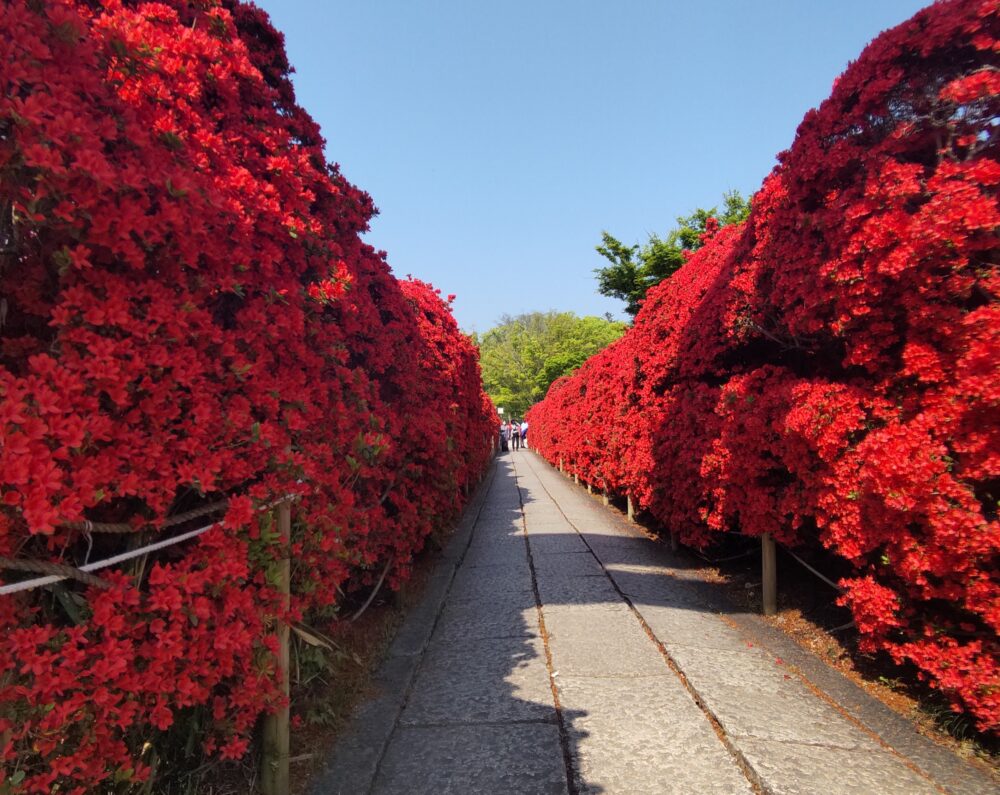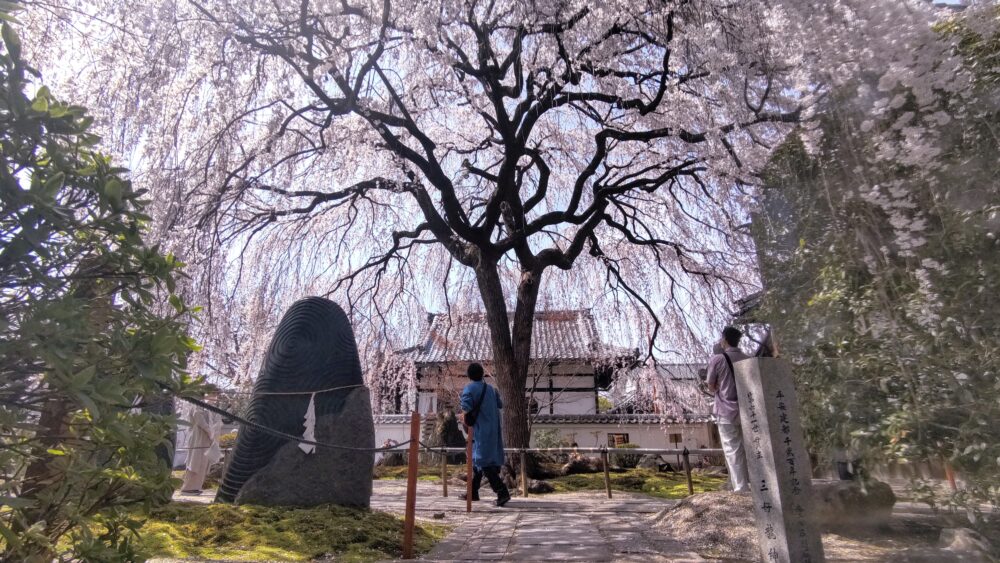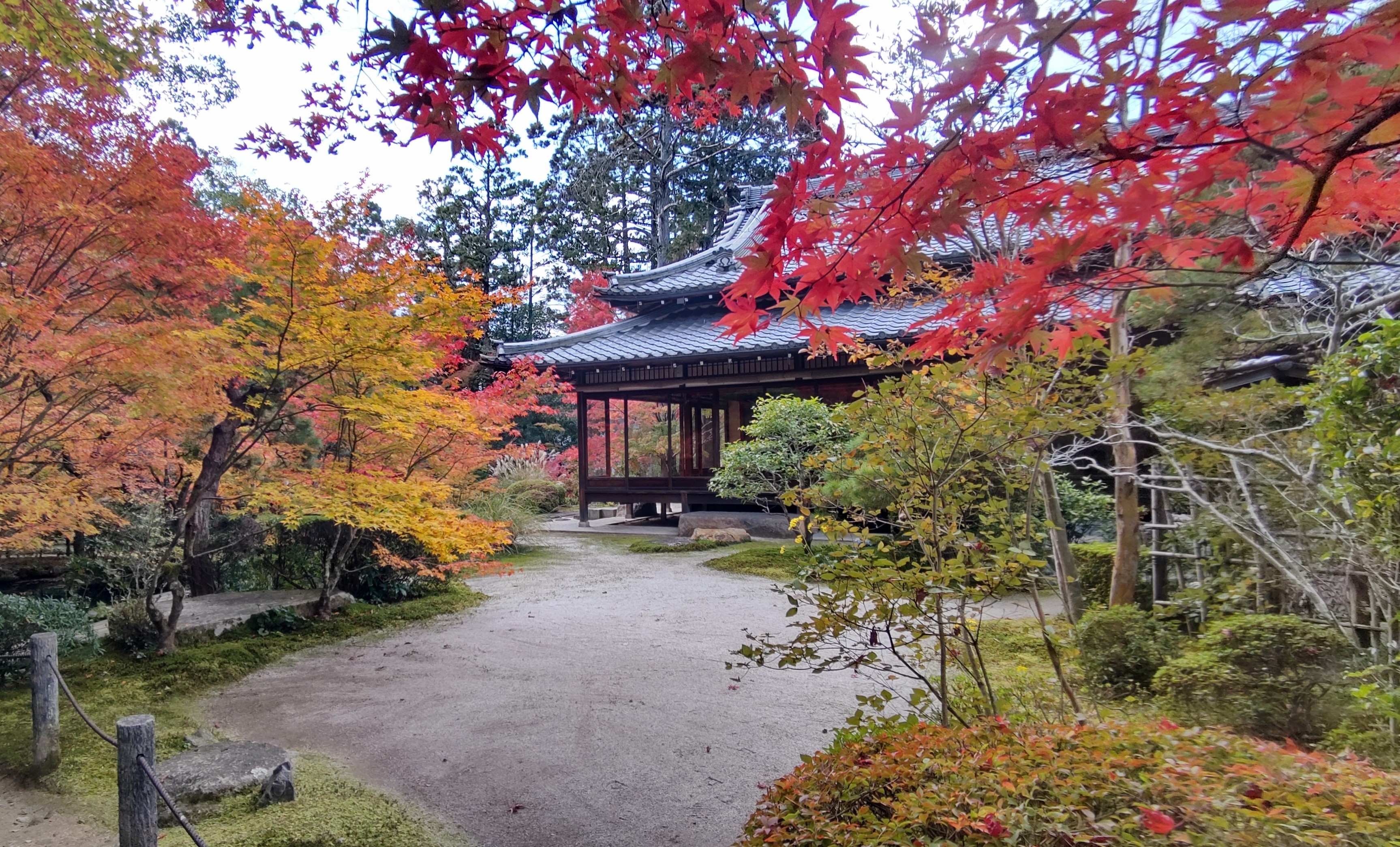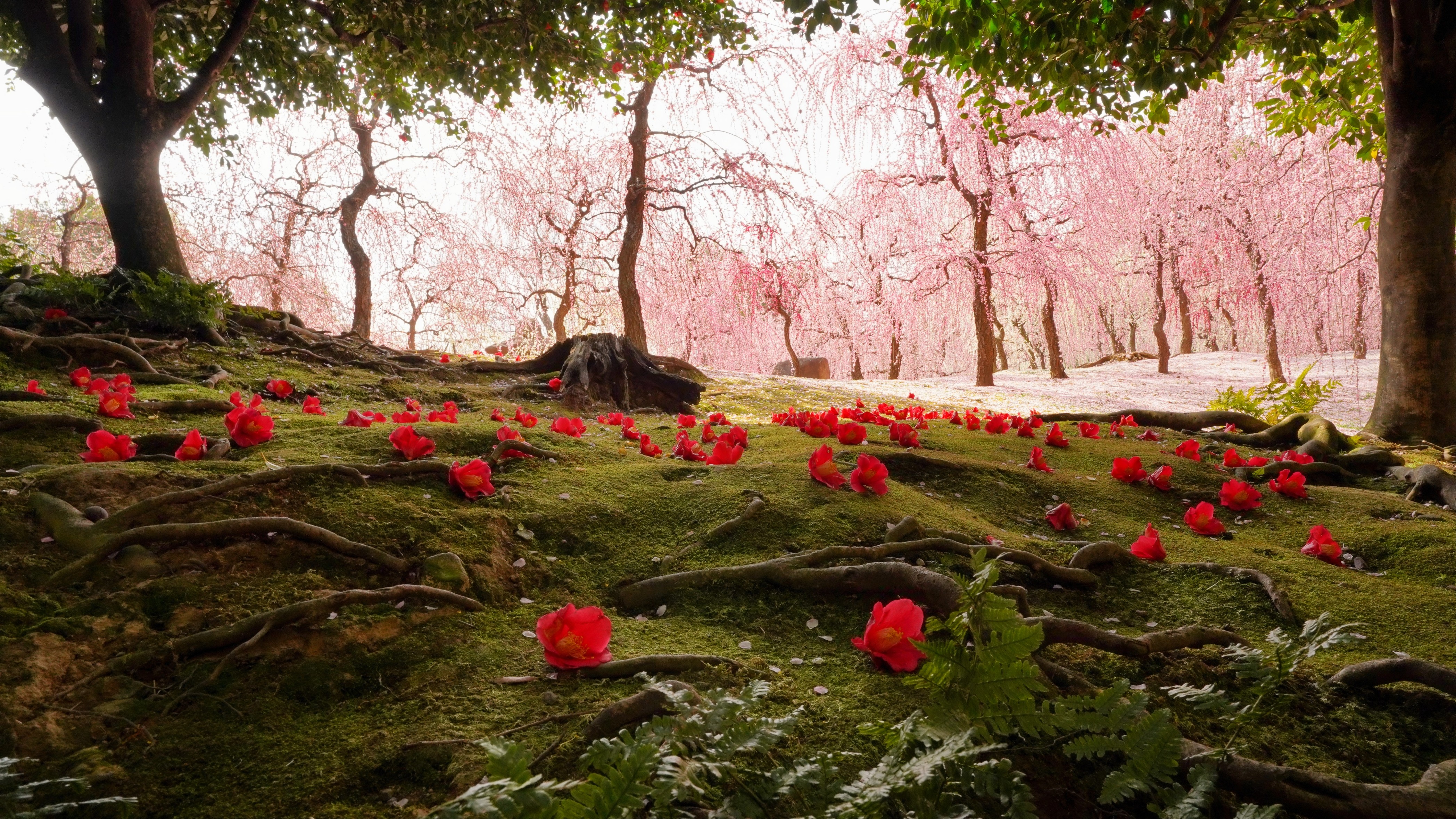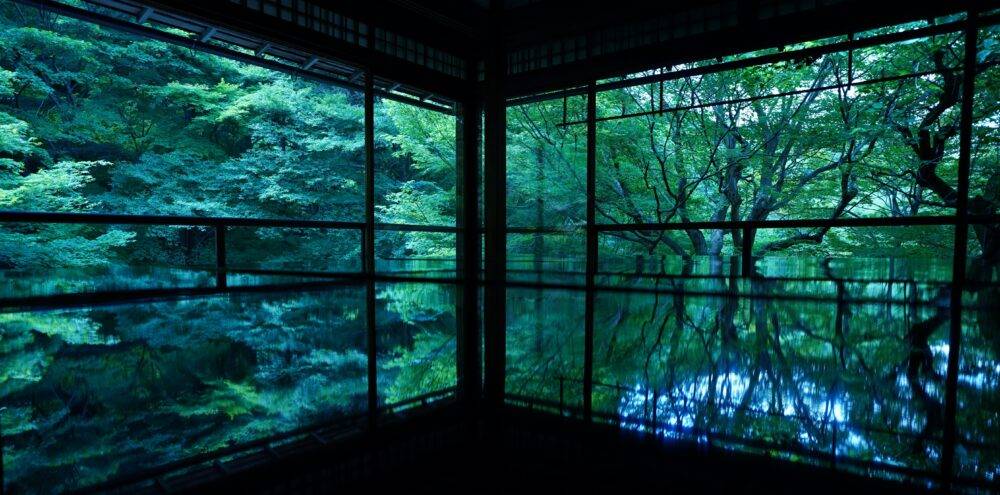Byodoin Temple | Best Time to Visit in 2025
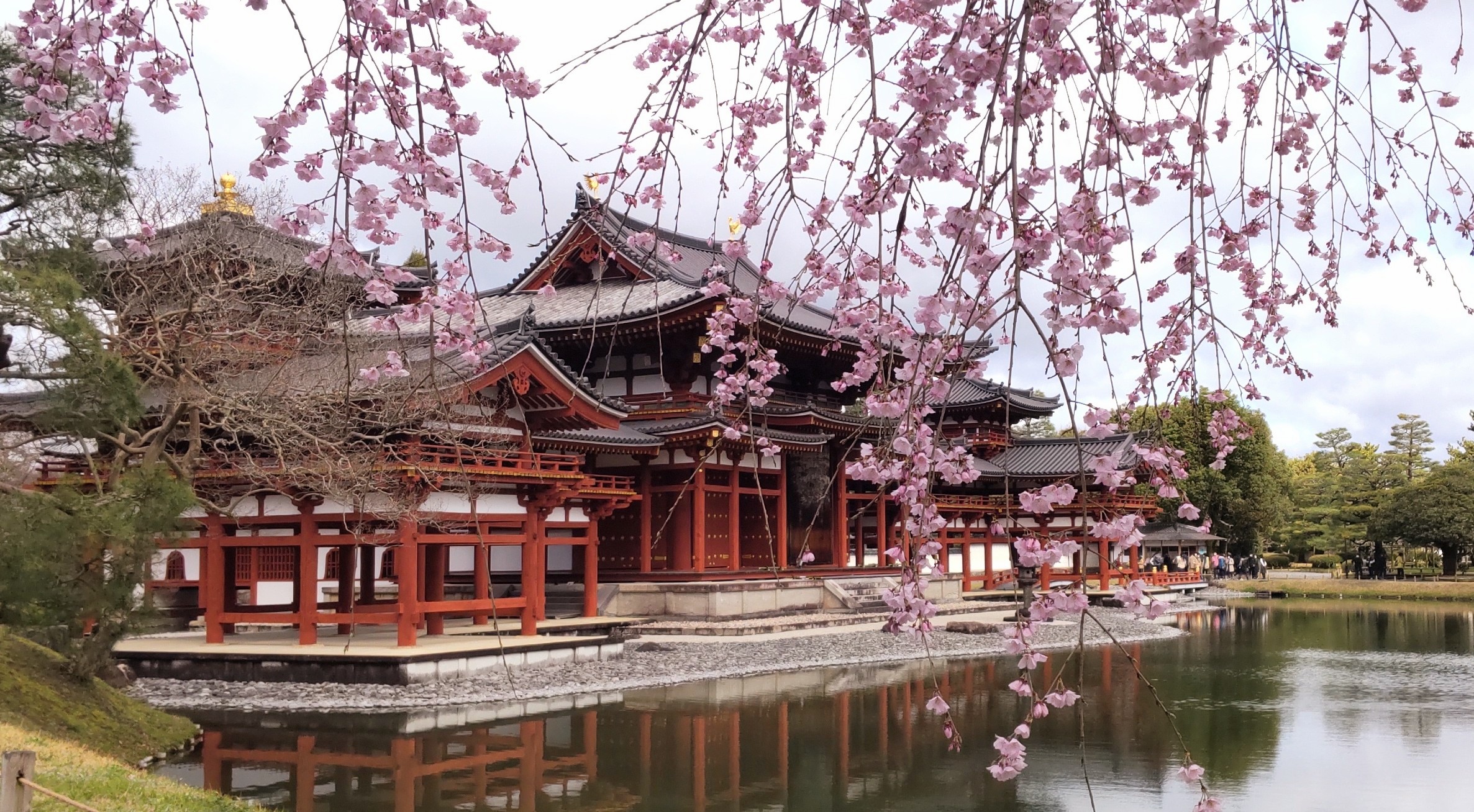
The Byodo-in Temple, located in Uji City in the southern part of Kyoto Prefecture, has a history spanning a millennium and has captivated countless tourists with its beauty. It is also so popular that it is featured on the back of Japan’s 10-yen coin.
Best season
Byodo-in Temple has a variety of trees with seasonal blossoms that attract many visitors throughout the year.
Cherry Blossoms (Early April)
On the east side of Byodo-in Pond, you’ll find weeping cherry trees that display their pink blossoms in early April each year. The scenery of Byodo-in Temple together with the full-blown weeping cherry blossoms is truly breathtaking.
Wisteria Trellis (Late April)
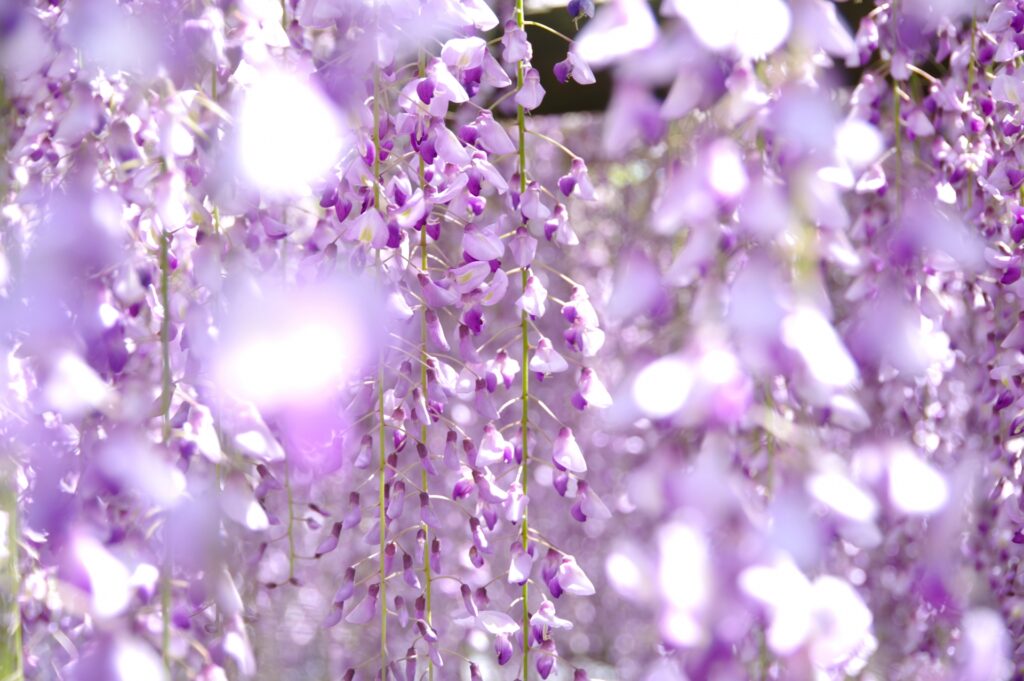
Wisteria is the family crest of the Fujiwara clan, the founders of the temple, and is also depicted in the temple crest of Byodo-in. There are three wisteria trellises on the grounds, and the one near Aji-ike Pond is about 280 years old. Since wisteria is a vine, it is trained to cascade down from a supporting structure. In late April, you can see stunning clusters of purple flowers, often more than a meter long, resembling delicate lace. The sight of them all blooming at once is breathtaking and attracts many tourists every year.
Lotus (early July)
Lotus flowers, often seen in Buddhist temples, are cherished at Aji-ike Pond as blossoms of the Pure Land afterlife. In summer, the lotus flowers are at their peak, and a unique variety called Byodo-in Lotus is planted here. In the past, lotus plants covered the entire pond, but now they grow mainly in the southeastern part.
History
In the 11th century, Kyoto experienced droughts and regional rebellions, leading to the popular belief in Mappo, “the end of the Buddhist Dharma,” which suggested a decline in Buddhism. As a result, Pure Land Buddhism, which sought rebirth in the paradise of the Pure Land, gained popularity among nobles and monks who yearned for the afterlife.
In 1052, Fujiwara no Yorimichi converted his father Michinaga’s villa into a Buddhist temple and founded Byodo-in Temple to represent this Pure Land paradise. The following year, the Phoenix Hall was completed and the Amida Buddha statue was enshrined in it.
In 1230, the Kannon-do Hall was built on the site of the original Main Hall. In 1698, the Uji fire caused extensive damage and the temple fell into disrepair. The Phoenix Hall was repaired from 1902 to 1907 and again from 1950 to 1957. It was inscribed on the UNESCO World Heritage List in 1994.
Buildings
Byodo-in Temple, which has been standing for 1000 years, is home to many historically significant cultural relics.
Phoenix Hall (Hoo-do)
Phoenix Hall consists of four main structures: the central hall (Chudo), the north wing corridor (Hokuyo-ro), the south wing corridor (Nanyo-ro), and the tail corridor (Biro).
Based on the Buddhist teaching that the Pure Land lies in the west, the Phoenix Hall and the Amida Buddha statue are built in the western area. Therefore, visitors pray to the Buddha facing west.
Interior Phoenix Hall
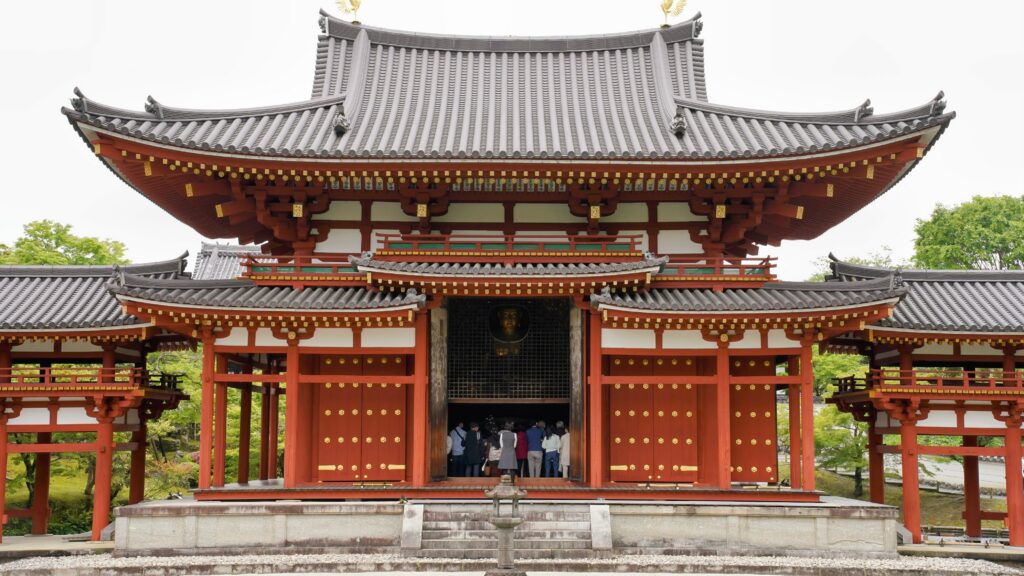
Interior of Phoenix Hall (Hoo-do) is the main image, a Jōroku Amitabha Tathagata statue. It’s a magnificent work carved from a single piece of Japanese cypress. Surrounding it are 26 celestial Bodhisattva statues depicted as floating on clouds and spreading Buddhism.
A reservation is required to visit the interior of Phoenix Hall.
Kannon-do Hall
Located immediately to the left after entering the temple grounds, next to the wisteria trellis, the Kannon-do Hall is a reconstruction built on the site of the original main hall. It is currently being renovated.
Phoenix Museum (Hoo-kan)
The Phoenix Museum, which was established in 2001 with the opening of the Treasure Hall, is a museum that displays many valuable cultural artifacts. These include national treasures such as the Temple Bell (Bonsho), the Phoenixes, and the statues of celestial beings offering music (Unchu Kuyo Bosatsu), as well as important cultural relics such as the Eleven-Headed Kannon Statue and Heian-era roof tiles (Onigawara).
Yorin-an Shoin
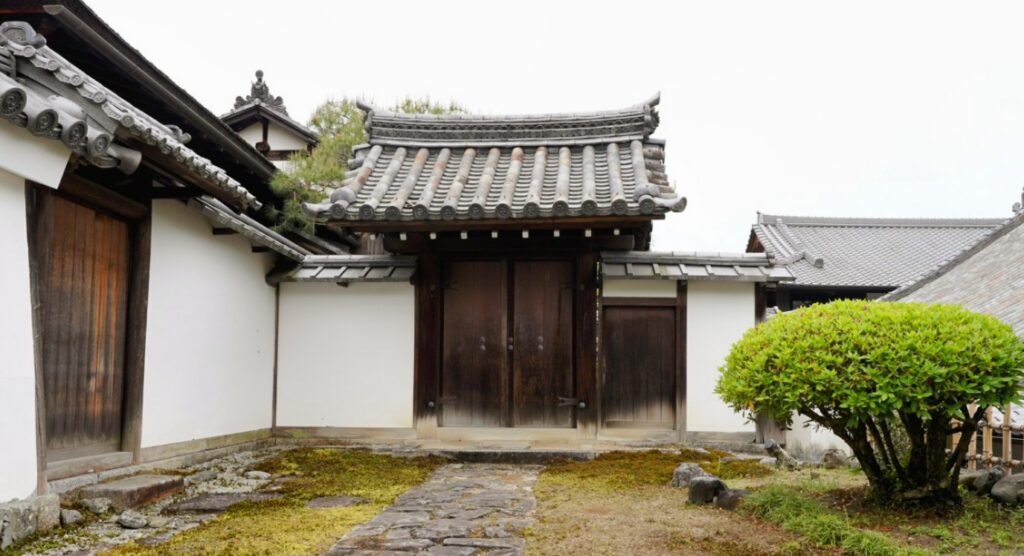
The Yorin-an Shoin is a sub-temple (tatchu) of the Byodo-in Phoenix Hall, located within the temple grounds. It is a cypress-roofed building constructed in the early Edo period (17th century). It is said that remnants of Momoyama Castle, which was located in Kyoto, were used as construction materials.
Saishoin Temple
Saishoin Temple is a sub-temple located on the north side of Byōdōin Temple. It was founded in 1654 by the Buddhist monk Chōei. It belongs to the Tendai school of Buddhism, and its main image is a standing statue of Fudo Myoo (Acala) from the Kamakura period, which is 145 cm high. The temple also has a seated statue of a goddess from the Heian period (height: 46 cm, currently on display at the Byodoin Museum Hoshokan) and the Ikedono Jizō Bosatsu (Bodhisattva) from the Northern and Southern Court periods.
Jodo-in Temple
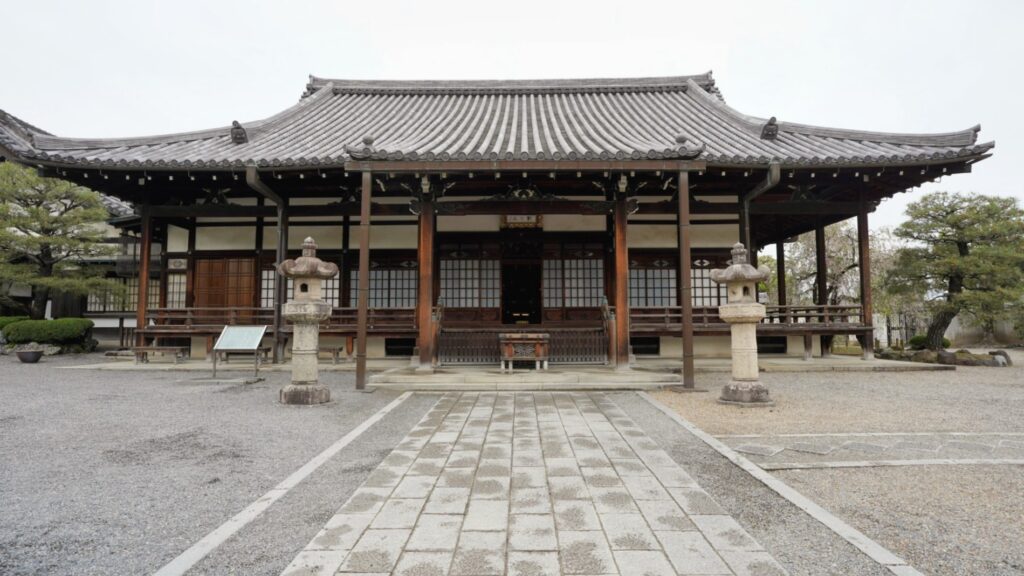
Jodo-in Temple is said to have been founded in the second half of the 15th century by Venerable Eiku of the Jodo sect. It preserves cultural relics such as the standing Amida Buddha statue, the standing Taishakuten statue, and the painted sliding doors (shōhekiga) of the Yorin-an Shoin.
Ogi-no-Shiba
Ogi-no-Shiba is said to be the place where Minamoto no Yorimasa met his end on May 26, 1180, after gathering an army with Prince Mochihito and issuing an imperial order to overthrow the Taira clan.
Garden
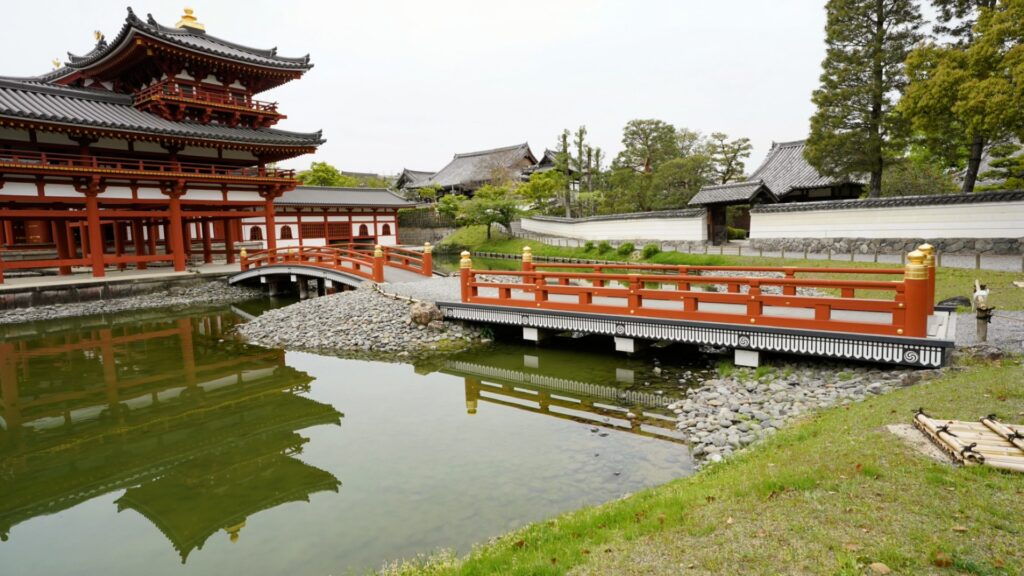
The garden at Byodo-in Temple is a quintessential Pure Land garden, meticulously designed to evoke the idyllic realm of the Buddhist Pure Land. It embodies the Buddhist worldview; for example, the Aji-ike Pond, designed to surround the Phoenix Hall, is named after the Sanskrit letter “A” (अ), symbolizing the source of all existence. As visitors walk around the pond, the sight of Phoenix Hall faintly reflected in the ripples of the water allows them to experience the Buddhist teaching that “the imperfect reflection in water is the true form.
The small stones arranged around the Phoenix Hall are a traditional landscaping technique called suhama, representing beautiful shorelines. On the right, facing the Phoenix Hall, two bridges span the water: the flat bridge (Hirabashi) and the arched bridge (Soribashi). The arched bridge represents the boundary between the earthly realm and the Pure Land.
Information
Opening Hours
| Places | Time |
|---|---|
| Byodoin Temple | 7:45a.m. – 5:30p.m. (Last Entry is at 5:15p.m.) |
| Byodoin Temple Museum “Hoshokan” | 9:00a.m. – 5:00p.m.(Last Entry is at 4:45p.m.) |
| Interior Phoenix hall “Hoo-do” Guide | 9:30a.m. – 4:10p.m.(every 20 minutes) |
| Tea Room “Sabo Toka” | 10:00a.m. – 4:30p.m. (Last Entry is at 4:00p.m.) |
| Reception | 9:10a.m. – 5:00p.m.(Last order is at 4:45p.m.) |
Regular Holiday
Tea Room “Sabo Toka” : Monday Tuesday Wednesday
*Open on Public Holidays.
Admission Fee
| Places | Price |
|---|---|
| Garden and Museum”Hoshokan | Adults : 700yen Junior High & High school Students: 400 yen Elementary School Students: 300 yen |
| Interior Phoenix hall “Hoo-do” | 300 yen per person |
Reserving the Interior of the Phoenix Hall
To view the interior of the Phoenix Hall, you need to make a reservation on-site at Byōdōin Temple.
- Reservation Start Time: From 9:10 a.m. on the day of your visit.
- Meeting Point: In front of the bridge, 5 minutes before your scheduled time.
- Guided Tours: Groups of up to 50 people depart every 20 minutes beginning at 9:30 a.m.
- Reservation Location: Reception desk on the right side of the entrance.
*Reception desk address
Adress
Renge-116 Uji, Kyoto 611-0021
Official Website
Byodo-in Temple(English Text)
